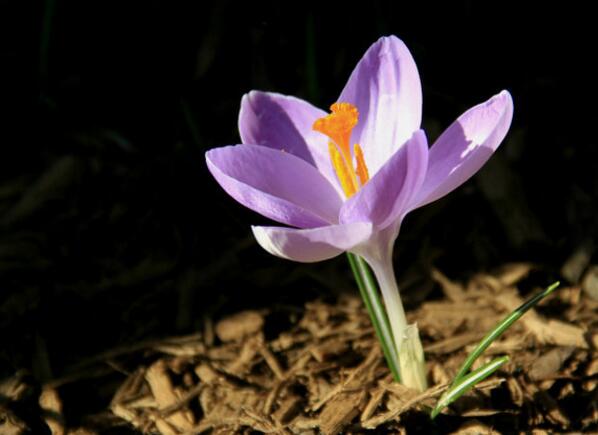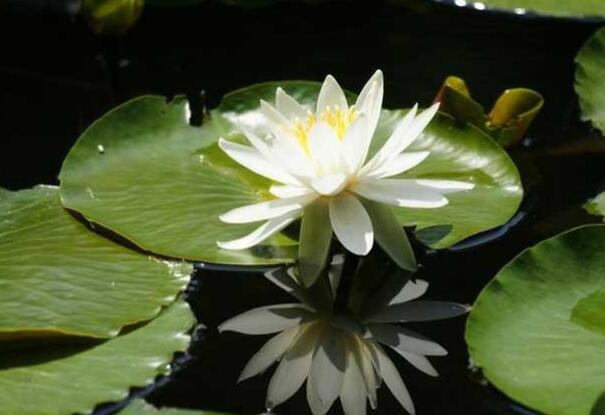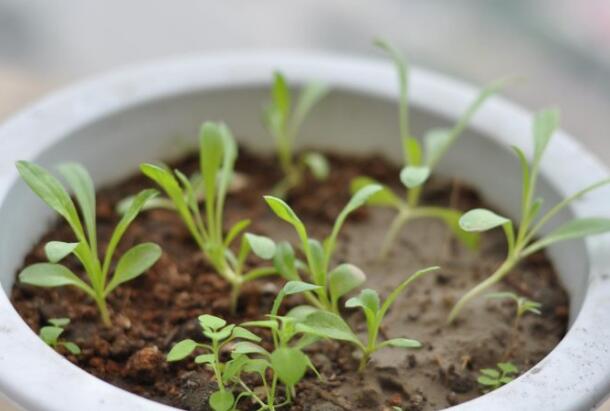How to reproduce saffron? two methods of propagation / bulb / sowing of saffron
Saffron is a highly ornamental plant. In fact, it can be roughly divided into two methods about how to reproduce crocuses, namely, ball-dividing reproduction and sowing reproduction. The survival rate of these two methods is relatively high. As for the specific method of saffron reproduction, the following editor will take you to understand.
How to reproduce / divide balls / sow crocuses

The reproduction of saffron can be divided into bulblet reproduction and sowing reproduction, in which bulblet reproduction is a more common one, so how to reproduce saffron is better, in fact, there is no absolute good or bad between the two methods. As long as the method is used correctly, it can survive.
2. Propagation methods of saffron
Bulblet reproduction
1. Time to divide the ball
Winter and spring belong to the growing period of saffron. Generally speaking, it is best to propagate from August to September. The earlier the saffron is divided, the more advantageous it is for the growth of saffron.
two。 Select seed ball
After the saffron blossoms in spring, the residual flowers should be removed in time to avoid excessive nutrient consumption, and it is best to apply fertilizer 1-2 times, which can effectively promote bulb growth and then continue normal maintenance. When it comes to the dormant period of saffron in summer, take out the bulb and store it after drying.
3. Save the seed ball
The method of preserving the seed ball should first remove the residual leaves at the top, remove the remains of the mother bulb, and then move them into the room, graded according to size, and put them on the indoor plaque frame. There is no need to bury the soil, the bulb bud mouth up, flat in the plaque, there is a slight gap between the bulbs.
4. Indoor ramet
In autumn, according to the shape of the bulb, those with bulbs can split it by breaking it by hand and planting it in a pot.
5. Maintenance after dividing the ball
After the saffron has completed the bulblet reproduction, it is necessary to appropriately increase the indoor humidity, which can keep the soil moist and better promote seed bulb germination. In addition to humidity and control of indoor temperature, the most suitable temperature for saffron growth is between 15 °and 18 °, which can effectively promote saffron blossom.
Sowing and reproduction
Since crocuses themselves are not easy to seed, they need to be pollinated artificially before they can get seeds. Wait until the seeds are ripe, sow them in the pot. When sowing, remember that the density is not too high, sparse is better, because crocuses need to grow balls, generally can not dig within 2 years, from seed sowing to plant flowering, it often takes 3 to 4 years.
Distribution, sowing and propagation of saffron
Saffron is a horticultural variety of hibiscus, which has a certain ornamental value and florescence for the whole year. Due to the strong branching ability of saffron, it is resistant to pruning and has a wide range of adaptation to the soil. Friends who like to breed crocuses themselves can choose to divide balls and sow seeds to breed.
Saffron
First, separate ball reproduction
The bulbs were propagated with bulbs. In the first and middle of May, when the aboveground part of saffron had not yet fully returned to seedling, the corms were dug up, separated according to size, and stored in a ventilated and dry place. Planted in the first and middle of September. Soaking the bulb with benzoate diluent before planting and treating the soil with an 100 mu has a good effect on eliminating nematodes in the soil and preventing the spread of diseases and insect pests. Early planting bulbs germinate first and then sprout, early emergence is beneficial to plant growth and development; late sowing is first germinated and then rooted, late emergence, seedling growth is poor. The size of the bulb is closely related to whether it blooms or not. The bulb weight of less than 8 grams generally does not blossom, and the number of flowering flowers increases with the increase of corm weight. The number of leaves, the number of leaves and the size of leaves are also related to the size of the corm. Therefore, the seed stem of saffron must be selected and planted at different levels. Generally divided into more than 25 grams, 16 grams 25 grams, 8 grams 18 grams, less than 8 grams of four files to facilitate management. Soaking the seeds and stems with 5% lime water for 20 minutes before sowing can prevent the terminal bud rot; soak the seeds with 25% carbendazim and 3000 times dicofol or 40% dimethoate for 20 minutes and soak the seeds immediately to control rot and Robin root mites. Before planting, remove the lateral buds on the corms, leave 1 top piercing for the bulbs less than 16 grams, 2 shoot buds for 16 grams and 25 grams, and 3 terminal buds for those more than 25 grams, and plant them in flat beds. The yield of saffron is related to planting density and depth. If the planting is too shallow, the number of new bulbs is more, the individual is small, and the flowering bulbs are less; if the plants are too deep (such as 10 cm deep), the new corms are larger, but the number of flowering bulbs is also reduced. For this reason, the planting density and depth of saffron should be planted separately according to the size of the bulb. The bulbs of less than 8 grams should be planted with row spacing of 9 cm 12 cm, plant spacing of 3 cm and depth of 3 cm 4.5 cm; for bulbs of 8 grams or 25 grams, row spacing should be 12 cm, plant spacing 6 cm, depth 6 cm; corms above 25 grams should have row spacing of 12 cm, plant spacing of 9 cm and depth of 6 cm. When planting, trench and sow according to the above depth, put the bulb into the above density, the main bud up, gently press into the soil, cover the soil to smooth. The seed consumption per hectare is about 10500 kg.
2. Sowing and propagation
As saffron is not easy to seed, it needs artificial pollination to get seeds. After the seeds are ripe, the seeds will be sown in the open field seedbed or pot with harvest. The seed sowing density should not be too high, and it is better to be sparse, because the plant needs to grow balls and generally cannot be dug within 2 years. It often takes 3 to 4 years from seed sowing to plant flowering.
Propagation methods of Saffron (Crocus sativus)
Bulblet propagation of saffron
Time to divide the ball
The growing period of saffron is in winter and spring, and there are two varieties: autumn flowering and spring ring opening, and the bulbs are usually divided from August to September. The earlier the ball is divided, the more beneficial it is to a strong seedling.
Select seed ball
The residual flowers should be picked immediately after blooming in spring to avoid nutrient consumption, and the compound fertilizer solution dominated by phosphorus and potassium should be applied once or twice to promote the growth and firmness of bulb roots and continue to maintain normally. In summer, the aboveground parts are withered and yellow, and the bulbs are taken out and dried and stored.
Save the seed ball
Cut off the residual leaves at the top, remove the remains of the mother bulb, then move them into the room, grade them according to size, and put them on the indoor plaque frame. There is no need to bury the soil, the bulb bud mouth up, flat in the plaque, there is a slight gap between the bulbs.
Indoor pot ramet
In autumn, those with bulbs can split according to the shape of the bulbs. Break it open directly with your hands and plant it in a pot.
Maintenance after dividing the ball
After dividing the ball, appropriately increase the indoor air humidity and keep the soil moist. Promote seed germination.
After mid-August, when the temperature drops, there is generally no need to take cooling measures. The suitable temperature of saffron is 15: 18 ℃. Controlling the indoor temperature after dividing the ball can promote flowering.
Sowing and breeding of saffron
Saffron is not easy to seed and needs artificial pollination to obtain seeds. So if you want to use the method of sowing and reproduction, you can buy seeds from the florist.
In the spring and autumn season, sow the seeds directly in the basin, with an interval of 5 to 10 centimeters between the seeds. It is better to be rare. Because the plant grows bulbs, the pot can not be changed to loosen the soil within 2 years.
It takes 3 to 4 years from seed sowing to plant flowering. During this period, you can properly water and fertilize.
- Prev

How to reproduce water lilies, three propagation methods of water lilies (cutting / ramet / sowing)
Water lilies, similar in shape to lotus flowers, are more valuable flowers, often found on the lakeside of the park, and are often potted at home. In daily farming, people only need to know how to grow water lilies, but it is also important for veterans to master the breeding methods of water lilies. So how do water lilies reproduce?
- Next

How to sow cornflower, cornflower propagation method/September sowing 70 days after flowering
For cornflower, I believe many people have seen it, its beautiful flower shape, rich in color, is a flower loved by friends. About cornflower breeding method, very simple, a little understanding is worth, but you know cornflower breeding method? Compared with other flowers, cornflower does not cut well.
Related
- Fuxing push coffee new agricultural production and marketing class: lack of small-scale processing plants
- Jujube rice field leisure farm deep ploughing Yilan for five years to create a space for organic food and play
- Nongyu Farm-A trial of organic papaya for brave women with advanced technology
- Four points for attention in the prevention and control of diseases and insect pests of edible fungi
- How to add nutrient solution to Edible Fungi
- Is there any good way to control edible fungus mites?
- Open Inoculation Technology of Edible Fungi
- Is there any clever way to use fertilizer for edible fungus in winter?
- What agents are used to kill the pathogens of edible fungi in the mushroom shed?
- Rapid drying of Edible Fungi

